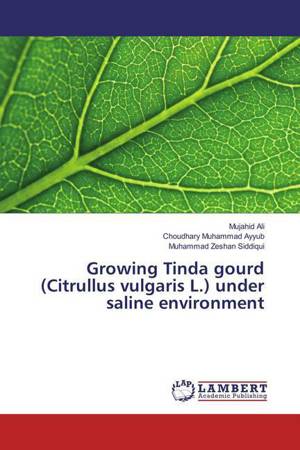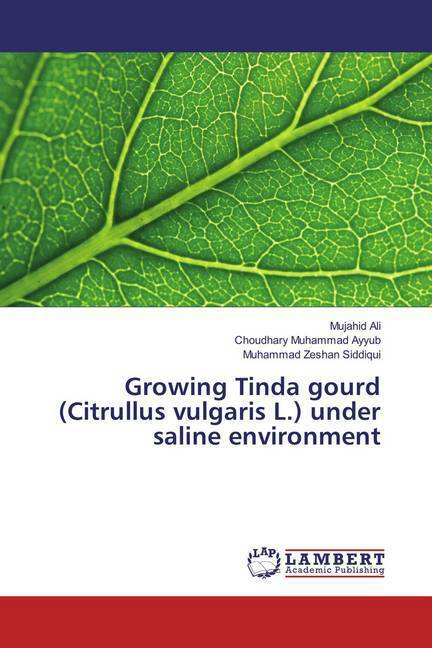
Je cadeautjes zeker op tijd in huis hebben voor de feestdagen? Kom langs in onze winkels en vind het perfecte geschenk!
- Afhalen na 1 uur in een winkel met voorraad
- Gratis thuislevering in België vanaf € 30
- Ruim aanbod met 7 miljoen producten
Je cadeautjes zeker op tijd in huis hebben voor de feestdagen? Kom langs in onze winkels en vind het perfecte geschenk!
- Afhalen na 1 uur in een winkel met voorraad
- Gratis thuislevering in België vanaf € 30
- Ruim aanbod met 7 miljoen producten
Zoeken
Growing Tinda gourd (Citrullus vulgaris L.) under saline environment
Mujahid Ali, Choudhary Muhammad Ayyub, Muhammad Zeshan Siddiqui
Paperback | Engels
€ 39,45
+ 78 punten
Omschrijving
Tinda gourd (citrullus vulgaris) belongs to family cucurbitaceae. Tindais a type of squash indigenous to Indo-Pakistan sub-continent which bears a close resemblance to early white bush scallop squash. As a matter of fact early bush scallop squash is locally known as Amexican tinda owing to their close affinity. The tinda gourd has a roundish fruit about the size of small turnip. It is picked up in raw stage when it has just shed off its pubescence but has very tender rind and soft seeds. But deficiency in available water under saline conditions causes dehydration at cellular level and eventually osmotic stress occurs. The excessive amounts of toxic ions like Na+ and Cl-create an ionic imbalance by reducing uptake of beneficial ions such as K+, Ca+2 and Mn+2. Keeping in view the extent of soil salinity and its effects on physical and physiological parameters of crops following objectives are formulated for the proposed study: 1. Screening of available tinda gourd germplasm for salinity tolerance. 2. Identification of morphological and physiological indicators for salinity tolerance in tinda gourd.
Specificaties
Betrokkenen
- Auteur(s):
- Uitgeverij:
Inhoud
- Aantal bladzijden:
- 80
- Taal:
- Engels
Eigenschappen
- Productcode (EAN):
- 9783659890215
- Uitvoering:
- Paperback
- Afmetingen:
- 150 mm x 220 mm

Alleen bij Standaard Boekhandel
+ 78 punten op je klantenkaart van Standaard Boekhandel
Beoordelingen
We publiceren alleen reviews die voldoen aan de voorwaarden voor reviews. Bekijk onze voorwaarden voor reviews.









